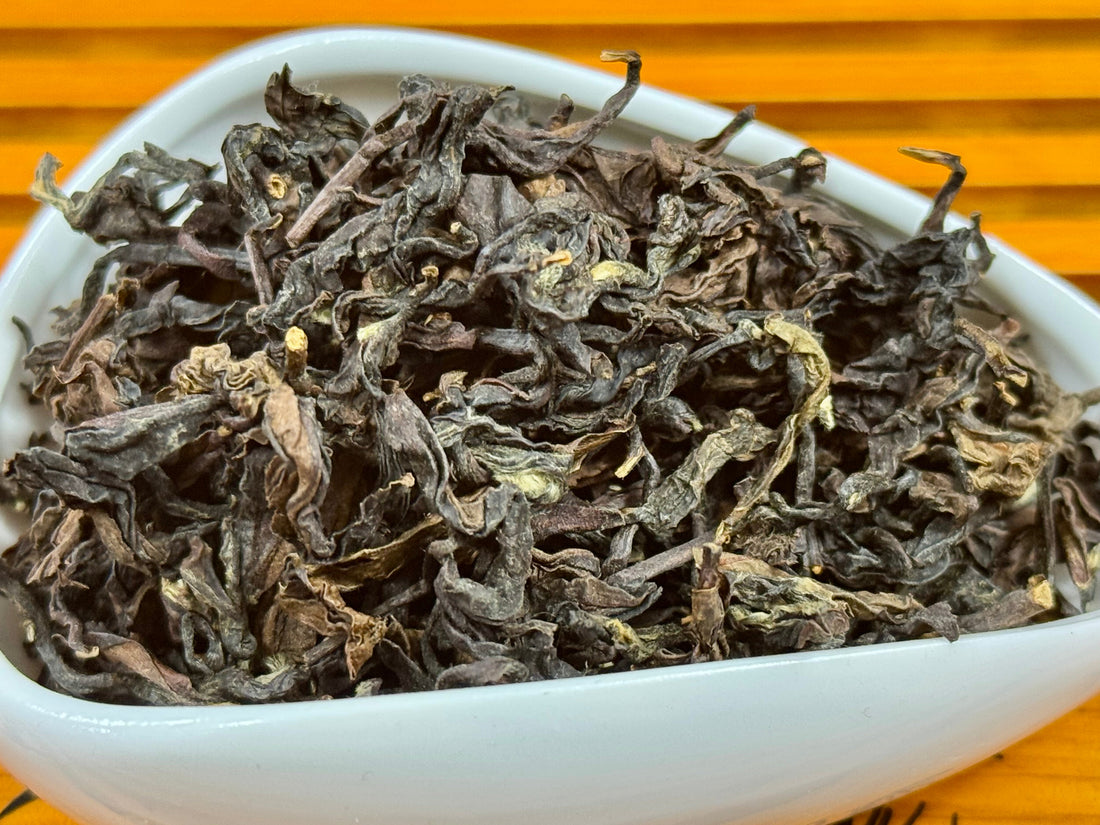
Oriental Beauty Oolong: The Tea That Dances Between Worlds
Share
Some teas surprise you. Others enchant you. But Oriental Beauty Oolong—also known as Dong Fang Mei Ren (東方美人)—seduces you. With its amber glow, honeyed fragrance, and layered flavor that shifts like silk in the wind, this tea is a living story of transformation, balance, and beauty born from imperfection.
What Is Oriental Beauty?
Oriental Beauty is a highly oxidized oolong (around 70–85%), placing it flavor-wise somewhere between oolong and black tea. But what makes it truly special? The bite of a bug.
Yes, really.
In the summer months, tiny leafhoppers (Jacobiasca formosana) nibble on the tea leaves in the fields of northern Taiwan. This natural stress triggers a chemical response in the plant—producing more polyphenols and aromatic compounds to protect itself. The result? A tea bursting with fruity, floral, honeyed complexity that no machine or human could replicate.
The leaves are harvested only once a year, entirely by hand, and carefully withered and oxidized to bring out their finest character. This is tea as art, born from nature’s dance.
The Flavor: Honey, Peach, and Autumn Sunlight
Brew a cup, and the liquor shines amber-gold—like a drop of warm sunlight caught in glass.
First aroma: honey, white peach, ripened fruit, and wildflowers.
First sip: a silky sweetness coats your tongue, followed by notes of muscat grape, toasted cinnamon, and a cooling aftertaste like mint or pine.
Later infusions reveal roasted nuts, apricot, and gentle tannins—never bitter, always graceful.
It’s a tea that lingers—in both flavor and feeling. The sweetness stays on your lips. The calm rises in your chest.

Why It’s Called “Oriental Beauty”
The name Dong Fang Mei Ren literally means “Eastern Beauty”, and legend has it that the name was given by Queen Victoria herself. When presented with the tea, she was so taken with its perfume and golden hue that she called it "Oriental Beauty"—a name that stuck.
But this tea also goes by other poetic names:
- Bai Hao Oolong (白毫烏龍) – “White Tip Oolong,” for the silvery buds
- Champagne Oolong – for its effervescent, sparkling taste
- Five Color Tea – for the variegated leaves of white, green, brown, yellow, and red
No matter what you call it, the essence is the same: refined, romantic, and radiant.
This tea deserves your attention. Watch the twisted leaves unfurl slowly. Inhale between steeps. Let the tea speak.
When to Drink Oriental Beauty
Late afternoon, when golden light fills the room
During creative work, when inspiration needs a muse
With dear friends, as conversation lingers into evening
In quiet solitude, for a moment of sweetness and grace
Oriental Beauty is more than a tea. It’s a paradox in a cup—bold yet soft, sweet yet structured, elegant yet wild. It’s the kind of tea that teaches you something: that beauty doesn’t come from perfection, but from harmony, from balance, from letting nature take the lead.
Drink it slowly. Let it unfold. And let the beauty rise—not just in the tea, but in you.
